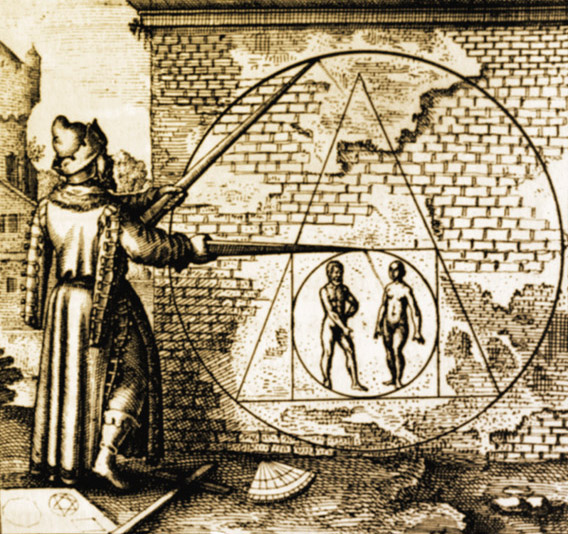|
Abacomancy
Abacomancy, also known as ''Amathomancy'' (from the Greek word "amathos" meaning sand) a form of divination based on the interpretation of the patterns in dust, dirt, silt, sand, or the ashes of the recently deceased. Reading the patterns is believed to give some insight into the future. Readers drop the dirt, sand, or ashes on a flat surface and start looking for a pattern that may represent symbols or pictures. They interpret these symbols and pictures to what is going to happen in the future. Some look for certain symbols that are seen over and over. Jackson Pollock, renowned painter, was famous for his series of paintings on abacomancy, which focused on the patterns in the paintings he made to foretell the future. See also * Divination * List of basic parapsychology topics * Methods of divination Methods of divination can be found around the world, and many cultures practice the same methods under different names. During the Middle Ages, scholars coined terms for many ... [...More Info...] [...Related Items...] OR: [Wikipedia] [Google] [Baidu] |
Methods Of Divination
Methods of divination can be found around the world, and many cultures practice the same methods under different names. During the Middle Ages, scholars coined terms for many of these methods—some of which had hitherto been unnamed—in Medieval Latin, very often utilizing the suffix when the art seemed more mystical (ultimately from Ancient Greek , , 'prophecy' or 'the power to prophesy') and the suffix when the art seemed more scientific (ultimately from Greek , , 'to observe'). Names like '' drimimantia'', '' nigromantia'', and '' horoscopia'' arose, along with other pseudosciences such as phrenology and physiognomy. Some forms of divination are much older than the Middle Ages, like haruspication, while others (such as megapolisomancy or coffee-based tasseomancy) originated in the 20th and 21st centuries. The chapter "How Panurge consulteth with Herr Trippa" of ''Gargantua and Pantagruel'', a parody on occult treatises of Heinrich Cornelius Agrippa, contains a list of ... [...More Info...] [...Related Items...] OR: [Wikipedia] [Google] [Baidu] |
Divination
Divination (from Latin ''divinare'', 'to foresee, to foretell, to predict, to prophesy') is the attempt to gain insight into a question or situation by way of an occultic, standardized process or ritual. Used in various forms throughout history, diviners ascertain their interpretations of how a querent should proceed by reading signs, events, or omens, or through alleged contact or interaction with a supernatural agency. Divination can be seen as a systematic method with which to organize what appears to be disjointed, random facets of existence such that they provide insight into a problem at hand. If a distinction is to be made between divination and fortune-telling, divination has a more formal or ritualistic element and often contains a more social character, usually in a religious context, as seen in traditional African medicine. Fortune-telling, on the other hand, is a more everyday practice for personal purposes. Particular divination methods vary by culture and reli ... [...More Info...] [...Related Items...] OR: [Wikipedia] [Google] [Baidu] |
Dust
Dust is made of fine particles of solid matter. On Earth, it generally consists of particles in the atmosphere that come from various sources such as soil lifted by wind (an aeolian process), volcanic eruptions, and pollution. Dust in homes is composed of about 20–50% dead skin cells. The rest, and in offices, and other human environments is composed of small amounts of plant pollen, human hairs, animal fur, textile fibers, paper fibers, minerals from outdoor soil, burnt meteorite particles, and many other materials which may be found in the local environment. Atmospheric Atmospheric or wind-borne fugitive dust, also known as ''aeolian dust'', comes from arid and dry regions where high velocity winds are able to remove mostly silt-sized material, deflating susceptible surfaces. This includes areas where grazing, ploughing, vehicle use, and other human behaviors have further destabilized the land, though not all source areas have been largely affected by anthropogenic ... [...More Info...] [...Related Items...] OR: [Wikipedia] [Google] [Baidu] |
Dirt
Dirt is an unclean matter, especially when in contact with a person's clothes, skin, or possessions. In such cases, they are said to become dirty. Common types of dirt include: * Debris: scattered pieces of waste or remains * Dust: a general powder of organic or mineral matter * Filth: foul matter such as excrement * Grime: a black, ingrained dust such as soot * Soil: the mix of clay, sand, and humus which lies on top of bedrock. The term 'soil' may be used to refer to unwanted substances or dirt that are deposited onto surfaces such as clothing. Exhibitions and studies A season of artworks and exhibits on the theme of dirt was sponsored by the Wellcome Trust in 2011. The centrepiece was an exhibition at the Wellcome Collection showing pictures and histories of notable dirt such as the great dust heaps at Euston and King's Cross in the 19th century and the Fresh Kills landfill which was once the world's largest landfill. Cleaning When things are dirty, they are usuall ... [...More Info...] [...Related Items...] OR: [Wikipedia] [Google] [Baidu] |
Silt
Silt is granular material of a size between sand and clay and composed mostly of broken grains of quartz. Silt may occur as a soil (often mixed with sand or clay) or as sediment mixed in suspension with water. Silt usually has a floury feel when dry, and lacks plasticity when wet. Silt also can be felt by the tongue as granular when placed on the front teeth (even when mixed with clay particles). Silt is a common material, making up 45% of average modern mud. It is found in many river deltas and as wind-deposited accumulations, particularly in central Asia, north China, and North America. It is produced in both very hot climates (through such processes as collisions of quartz grains in dust storms) and very cold climates (through such processes as glacial grinding of quartz grains.) Loess is soil rich in silt which makes up some of the most fertile agricultural land on Earth. However, silt is very vulnerable to erosion, and it has poor mechanical properties, making construction ... [...More Info...] [...Related Items...] OR: [Wikipedia] [Google] [Baidu] |
Sand
Sand is a granular material composed of finely divided mineral particles. Sand has various compositions but is defined by its grain size. Sand grains are smaller than gravel and coarser than silt. Sand can also refer to a textural class of soil or soil type; i.e., a soil containing more than 85 percent sand-sized particles by mass. The composition of sand varies, depending on the local rock sources and conditions, but the most common constituent of sand in inland continental settings and non-tropical coastal settings is silica (silicon dioxide, or SiO2), usually in the form of quartz. Calcium carbonate is the second most common type of sand, for example, aragonite, which has mostly been created, over the past 500million years, by various forms of life, like coral and shellfish. For example, it is the primary form of sand apparent in areas where reefs have dominated the ecosystem for millions of years like the Caribbean. Somewhat more rarely, sand may be composed of calciu ... [...More Info...] [...Related Items...] OR: [Wikipedia] [Google] [Baidu] |
Jackson Pollock
Paul Jackson Pollock (; January 28, 1912August 11, 1956) was an American painter and a major figure in the abstract expressionist movement. He was widely noticed for his " drip technique" of pouring or splashing liquid household paint onto a horizontal surface, enabling him to view and paint his canvases from all angles. It was called all-over painting and action painting, since he covered the entire canvas and used the force of his whole body to paint, often in a frenetic dancing style. This extreme form of abstraction divided the critics: some praised the immediacy of the creation, while others derided the random effects. In 2016, Pollock's painting titled ''Number 17A'' was reported to have fetched US$200 million in a private purchase. A reclusive and volatile personality, Pollock struggled with alcoholism for most of his life. In 1945, he married the artist Lee Krasner, who became an important influence on his career and on his legacy. Pollock died at the age of 44 in an ... [...More Info...] [...Related Items...] OR: [Wikipedia] [Google] [Baidu] |
Divination
Divination (from Latin ''divinare'', 'to foresee, to foretell, to predict, to prophesy') is the attempt to gain insight into a question or situation by way of an occultic, standardized process or ritual. Used in various forms throughout history, diviners ascertain their interpretations of how a querent should proceed by reading signs, events, or omens, or through alleged contact or interaction with a supernatural agency. Divination can be seen as a systematic method with which to organize what appears to be disjointed, random facets of existence such that they provide insight into a problem at hand. If a distinction is to be made between divination and fortune-telling, divination has a more formal or ritualistic element and often contains a more social character, usually in a religious context, as seen in traditional African medicine. Fortune-telling, on the other hand, is a more everyday practice for personal purposes. Particular divination methods vary by culture and reli ... [...More Info...] [...Related Items...] OR: [Wikipedia] [Google] [Baidu] |
List Of Basic Parapsychology Topics
Parapsychology is a field of research that studies a number of ostensible paranormal phenomena, including telepathy, precognition, clairvoyance, psychokinesis, near-death experiences, reincarnation, and apparitional experiences. Essence of parapsychology * Fringe science * Paranormal * Pseudoscience * Psionics * Psychic * Psychology General concepts * Abacomancy * Altered state of consciousness * Apparitional experience * Astral body * Aura (paranormal) * Clairaudience * Clairsentience * Clairvoyance * Cold reading * Dowsing * Ectoplasm (paranormal) * Exorcist * Extrasensory perception (ESP) * Ganzfeld experiment * Ghosts * Global Consciousness Project * Haunted house * History of parapsychology * Hot reading * Hypnosis * IANDS * '' Journal of Parapsychology'' * List of psychic abilities * Materialization (parapsychology) * Medical intuitive * Mediumship * Mental Radio * Metaphysical levitation * Mind–body interventions * Morphic field * National Laboratory of P ... [...More Info...] [...Related Items...] OR: [Wikipedia] [Google] [Baidu] |
Sand
Sand is a granular material composed of finely divided mineral particles. Sand has various compositions but is defined by its grain size. Sand grains are smaller than gravel and coarser than silt. Sand can also refer to a textural class of soil or soil type; i.e., a soil containing more than 85 percent sand-sized particles by mass. The composition of sand varies, depending on the local rock sources and conditions, but the most common constituent of sand in inland continental settings and non-tropical coastal settings is silica (silicon dioxide, or SiO2), usually in the form of quartz. Calcium carbonate is the second most common type of sand, for example, aragonite, which has mostly been created, over the past 500million years, by various forms of life, like coral and shellfish. For example, it is the primary form of sand apparent in areas where reefs have dominated the ecosystem for millions of years like the Caribbean. Somewhat more rarely, sand may be composed of calciu ... [...More Info...] [...Related Items...] OR: [Wikipedia] [Google] [Baidu] |







